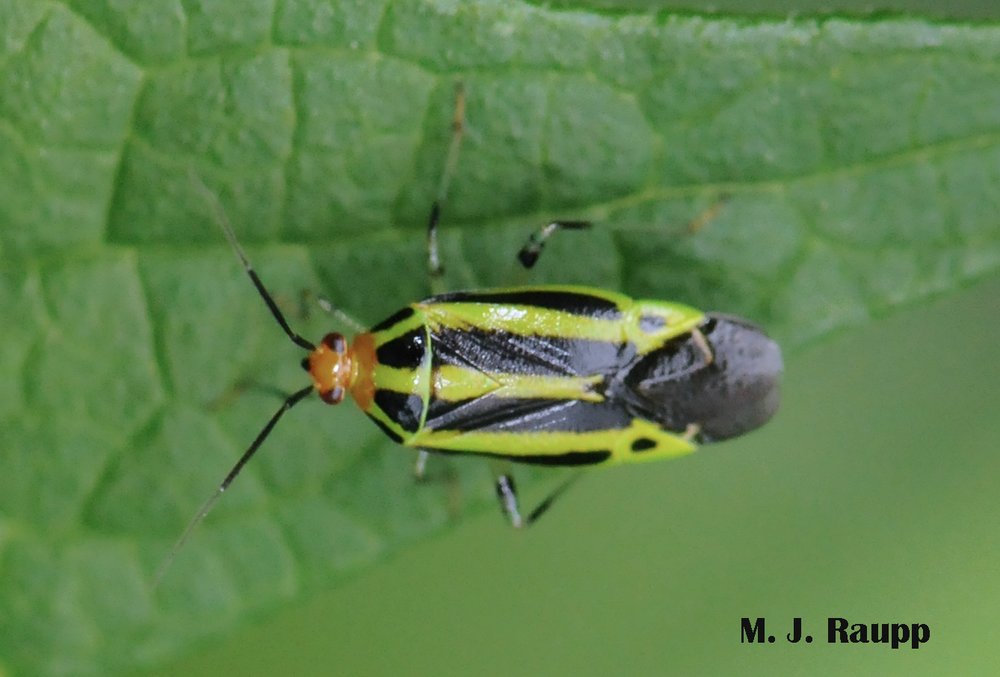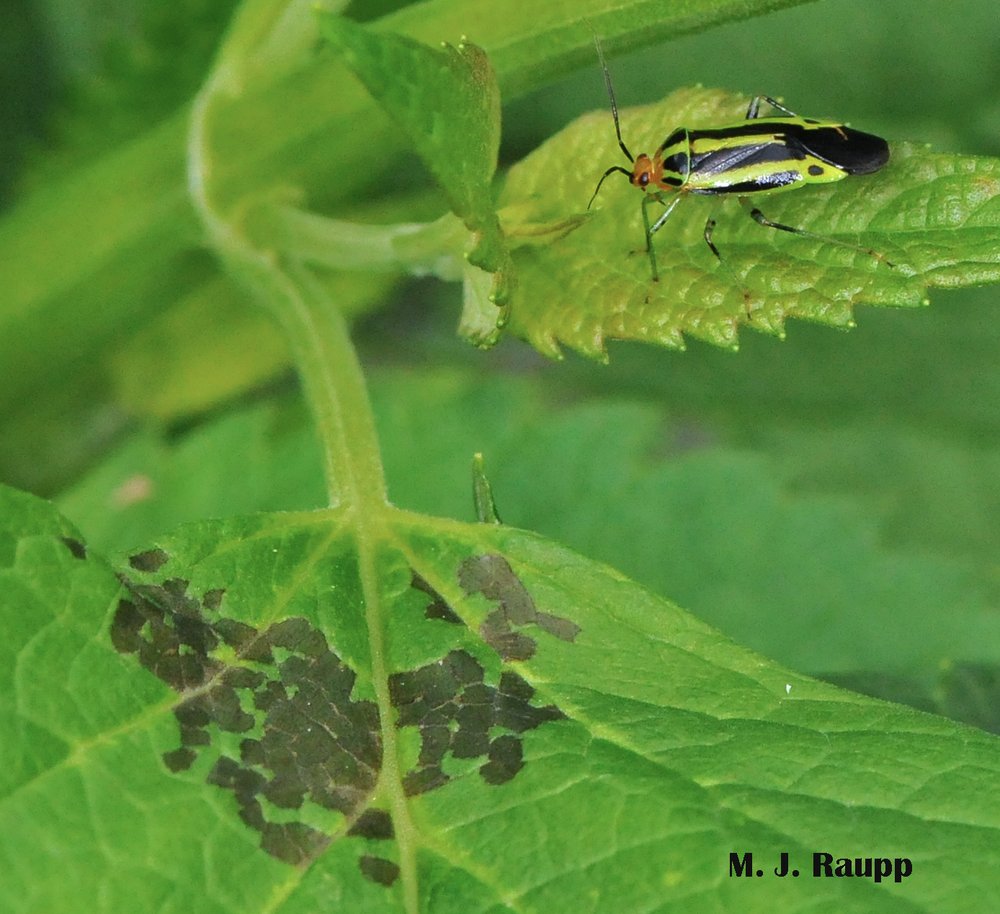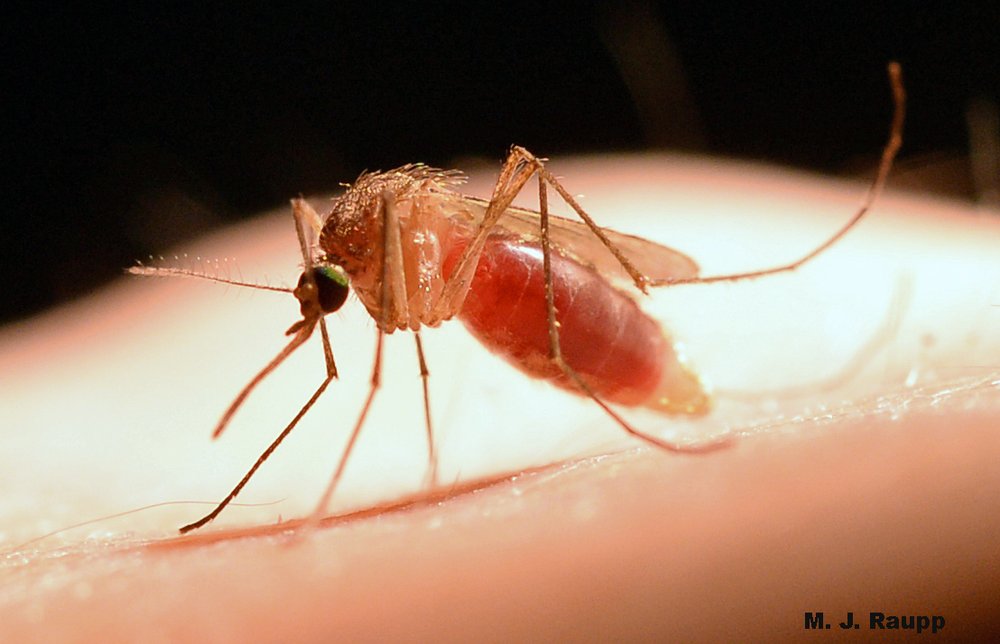Bee Balm Blues Courtesy of Fourlined plant bug, Poecilocapsus lineatus

Can you guess why they are called fourlined plant bugs?
Bee season has arrived and the flood of pollinators and other beneficial insects in my flower gardens is underway. My bee balms and other monardas are revving up their flower heads in preparation for another busy season serving nectar and pollen. While inspecting my perennials in anticipation of this event, I noticed several bee balms adorned with small necrotic spots and puckered leaves. This was the handiwork of the fourlined plant bug, a bodacious member of the Hemiptera clan infamous for distorting and disfiguring plant parts. Like other true bugs, this rascal has sucking mouthparts that pierce plant tissue and rupture delicate cells. Following the initial piercing by the beak, salivary enzymes are secreted into the plant to digest and liquefy plant tissues in preparation for the big suck. Inside the bug’s head is a tiny pump that is activated after insertion of its needlelike stylets into the plant. Rhythmic contractions of muscles create negative pressure, drawing nutrient rich cell contents into the digestive tract of the beast. One would think this insult was enough, but no, after the bug has removed its beak the lingering digestive action of these salivary enzymes, or pectinases, continue to degrade cell walls, leaving behind unsightly necrotic spots. In addition to leaf distortion and discoloration, dead tissue zones drop from leaves creating a lattice of small irregular holes.
A few weeks ago, tiny red nymphs of fourlined plant bugs hatched from overwintered eggs in plant litter. Their feeding distorts leaves and creates necrotic spots. A very pregnant female will soon deposit eggs in plant tissue. Digestive enzymes secreted into leaves produce dark lesions on leaves that remain long after adults scurry away.

Digestive enzymes injected into a leaf by fourlined plant bugs create long lasting necrotic lesions.
Besides pestering my herbaceous perennials, fourlined plant bug is known to attack more than 250 species of plants including many vegetables, trees, and shrubs. While this may sound like the 11th biblical plague, fourlined plant bugs do their dirty work early in the season and my bee balms and other perennials will surely outgrow these plant bug shenanigans and flower just fine. Most gardeners consider fourlined plant bug damage to be cosmetic and nothing more. To reduce damage caused by the bug, remove old plant debris from the garden in late autumn. Bugs overwinter as eggs in plant rubble so this will reduce the inoculum of colonists the following spring. If retribution is more your style, you can cup your hands around infested leaves, dislodge the bugs within, and simply crush their little bodies or deposit them into a cup of soapy water (their swimming skills are not well developed). Applications of horticultural oils or insecticidal soaps will also bring a swift end to their lives. If using soaps or oils, as with all insecticides, be sure to follow label directions and avoid applications when pollinators and other beneficial insects are present. Directed sprays of water with a garden hose may dislodge these bugs, sending them to the soil where the hungry jaws of ground beetles and other predators await. If bee balms and other pollinator-friendly plants abound in your beds, this week take a peek and look for the handiwork of foulined plant bugs.
Acknowledgements
The great references “Fourlined Plant Bugs” by Jeffrey Hahn and Suzanne Wold-Burkness, and “Role of Saliva in the Highly Destructive Fourlined Plant Bug (Hemiptera: Miridae: Mirinae)” by Allen Carson Cohen and Alfred G. Wheeler Jr., were used in preparing this episode.
This post appeared first on Bug of the Week








